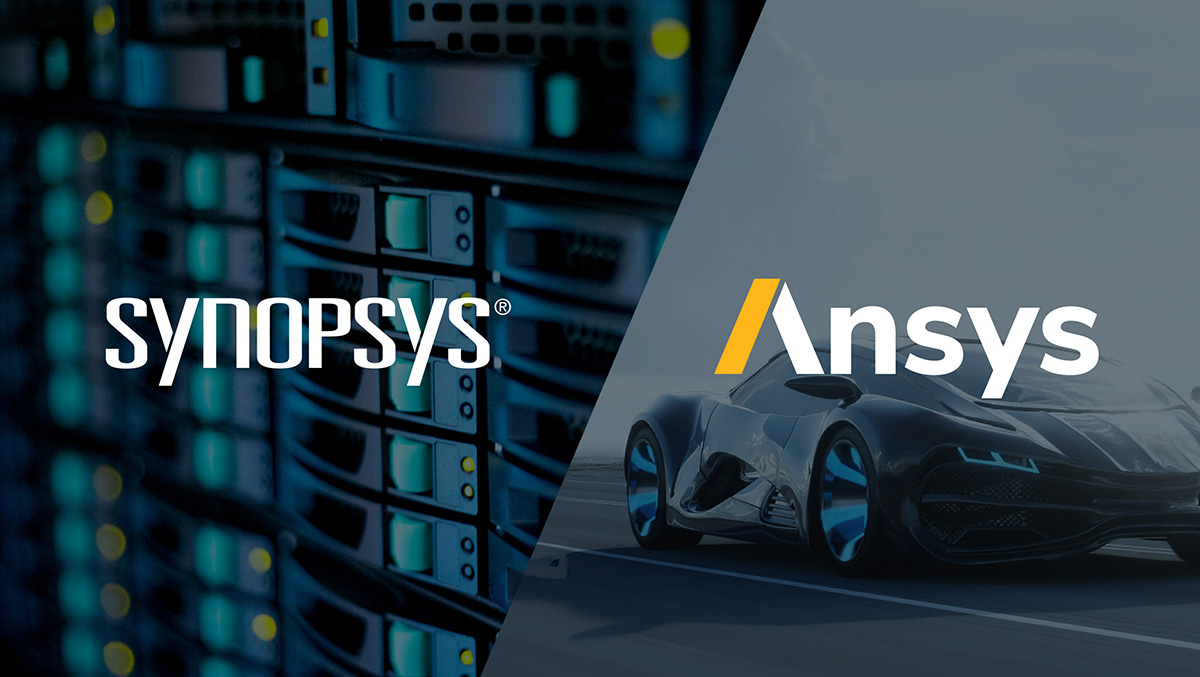[Image: Synopsys]
Synopsys, a Silicon Valley–based maker of electronic design automation (EDA) software for the semiconductor industry, has entered into an agreement to acquire Ansys, a US-headquartered developer and provider of simulation and analysis software, in a cash-and-stock deal valued at US$35 billion. The companies expect that the transaction will close in the first half of 2025, subject to shareholder and regulatory approvals.
Both Synopsys and Ansys are familiar names in optical design and testing. Synopsys markets a variety of software tools, including Code V, OptSim and others, used in design and simulation of optoelectronic and integrated-photonic devices across a wide range of applications. Ansys offers design, simulation and optimization tools under the Speos, Zemax OpticStudio and Lumerical brands.
The rationale for the merger, however, goes far beyond these optics-related efforts. For Synopsys, it is part of a longer-term “silicon to systems” strategy across its full semiconductor design technology suite, to address “customers’ need for the fusion of electronics and physics, augmented by AI.” Synopsis says the transaction will expand its total addressable market by 50%, to US$28 billion, and should begin contributing to earnings per share by the second full year after the transaction’s close.
Long-term partnership
Synopsys has already partnered with Ansys for some seven years, with the simulation and analysis tools of Ansys complementing Synopsys strengths in EDA software. The companies believe that bringing those capabilities more tightly together within Synopsys makes sense amid the “megatrends” now defining the current semiconductor and electronics arena.
Chief among those trends is the emergence of AI and intelligent and software-defined systems, developments affecting demands of both data centers and edge devices. Synopsys believes bringing the simulation and analysis capabilities of Ansys in-house will enable more of an end-to-end solution for customers designing products in this complex environment—an approach that Synopsys calls its “silicon to systems” strategy. Synopsys sees particular opportunities on this head in several markets in which Ansys has established a strong presence, including the automotive, aerospace and industrial segments.
For Synopsys, the acquisition is part of a longer-term “silicon to systems” strategy to address “customers’ need for the fusion of electronics and physics, augmented by AI.”
“The megatrends of AI, silicon proliferation and software-defined systems are requiring more compute performance and efficiency in the face of growing, systemic complexity,” Sassine Ghazi, the president and CEO of Synopsys, said in a press release announcing the acquisition. “Bringing together Synopsys’ industry-leading EDA solutions with Ansys’ world-class simulation and analysis capabilities will enable us to deliver a holistic, powerful and seamlessly integrated silicon-to-systems approach to innovation to help maximize the capabilities of technology R&D teams across a broad range of industries.”
Financial impacts
On the financial side, the deal allows Synopsys to plug into a total addressable market of US$28 billion that could grow at a compound annual rate of 11%, according to the company. And Synopsys expects the combined companies’ expansion to outstrip that market-growth rate—particularly as they achieve cost and revenue synergies in the years following the acquisition. Long term, these synergies could amount to US$1 billion or more annually, according to the release.
Under the terms of the deal, Ansys shareholders will receive US$197 in cash and 0.345 shares of Synopsys common stock for each Ansys share held, putting the deal value at US$35 billion, based on Synopsys’ 31 December closing price. Synopsys plans to fund the US$19 billion cash part of the transaction using cash on hand plus US$16 billion in new debt financing, which has already been fully committed. The company believes it should be able to rapidly unwind that debt based on the strong free cash flow expected to be generated by the combined companies.

